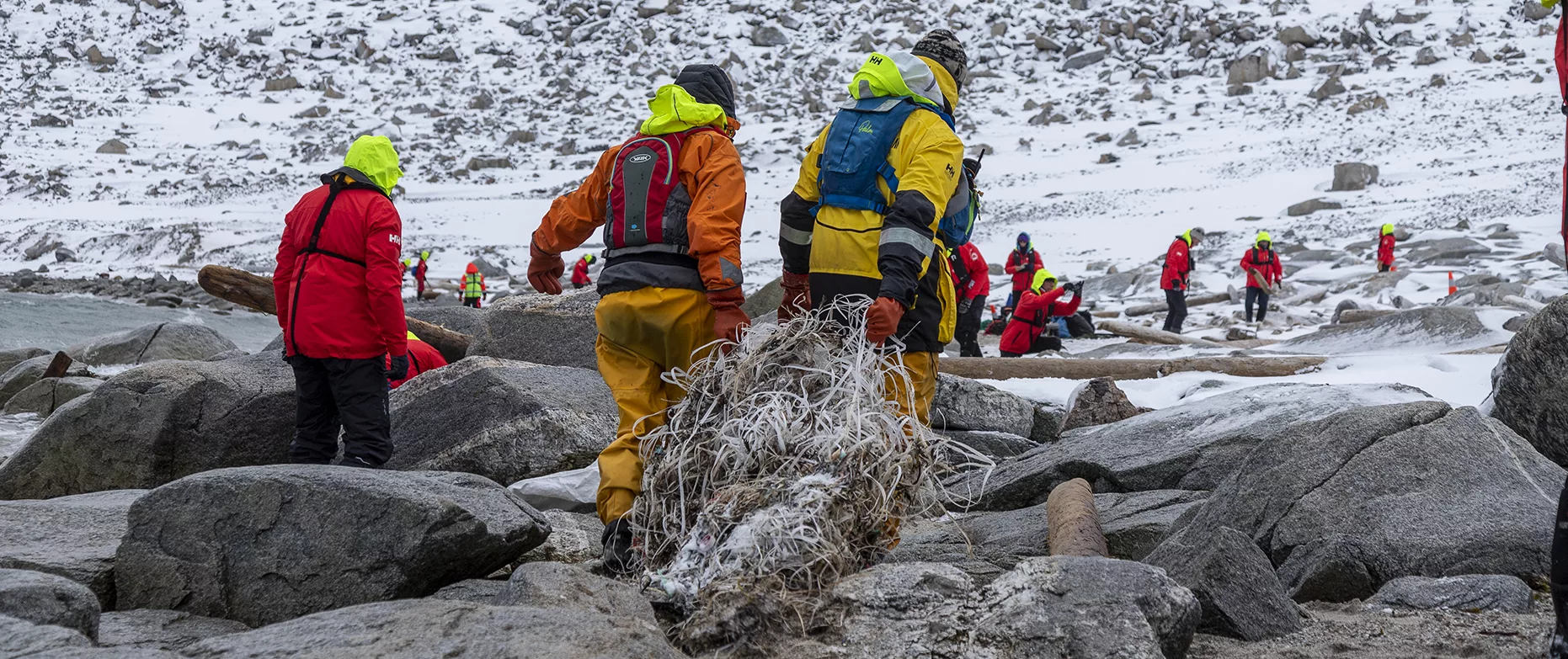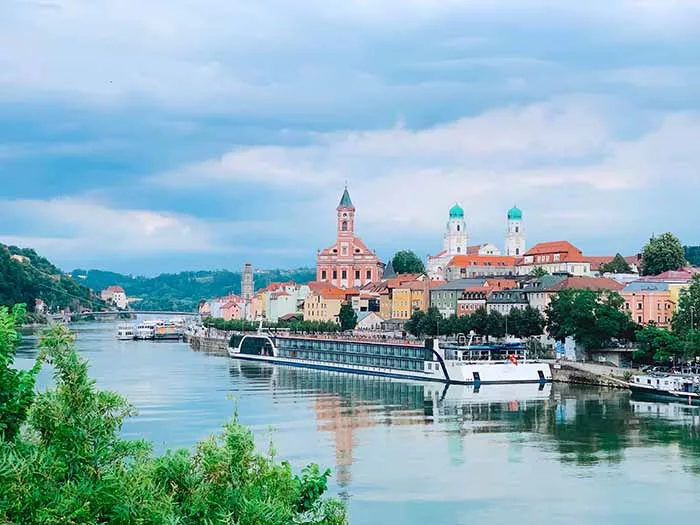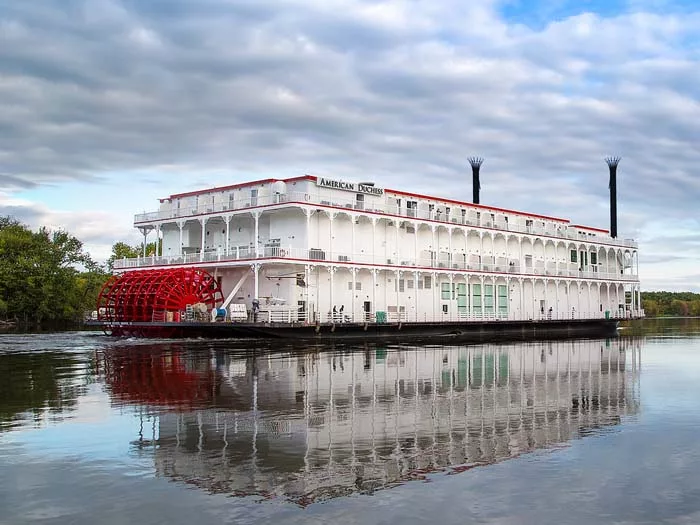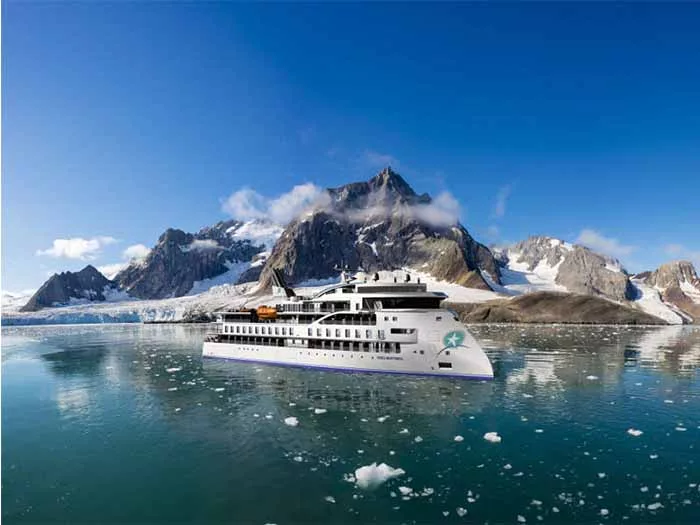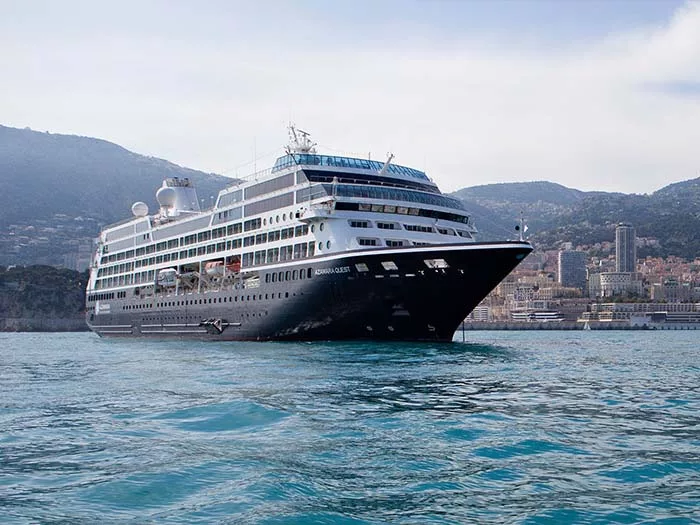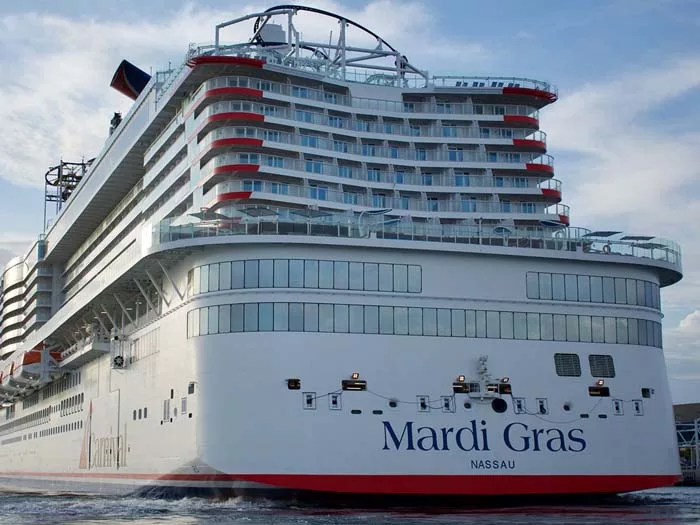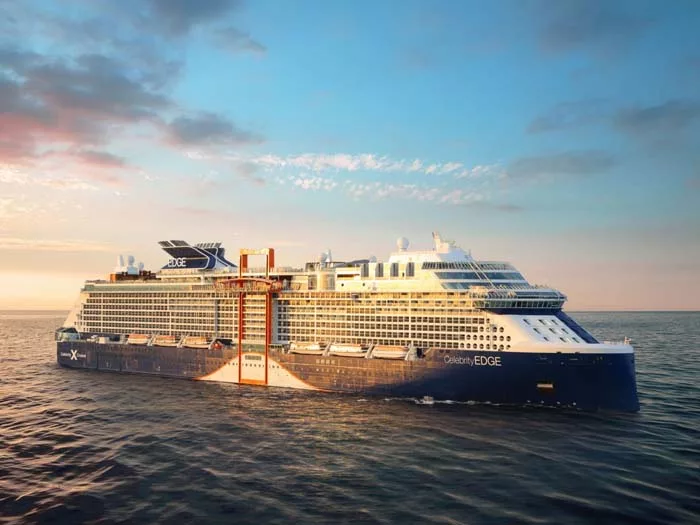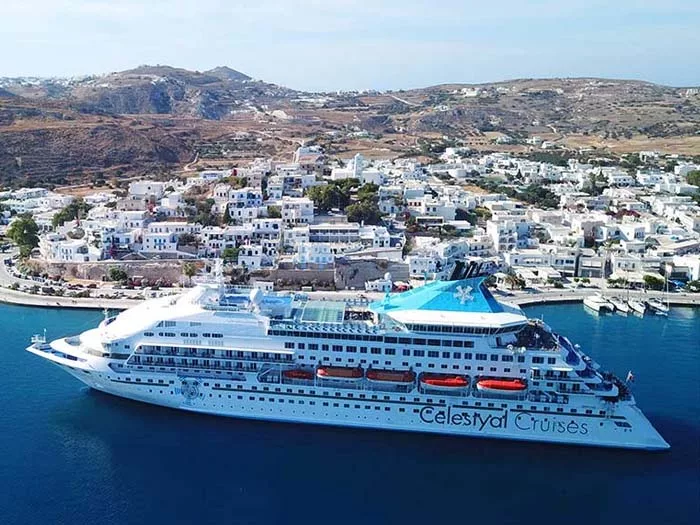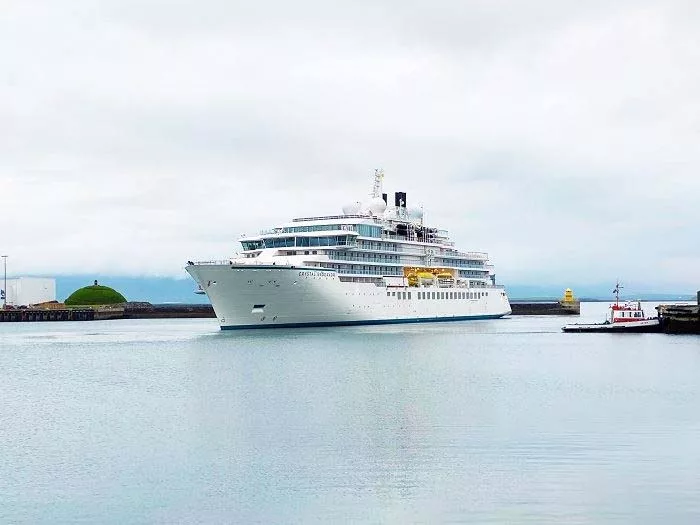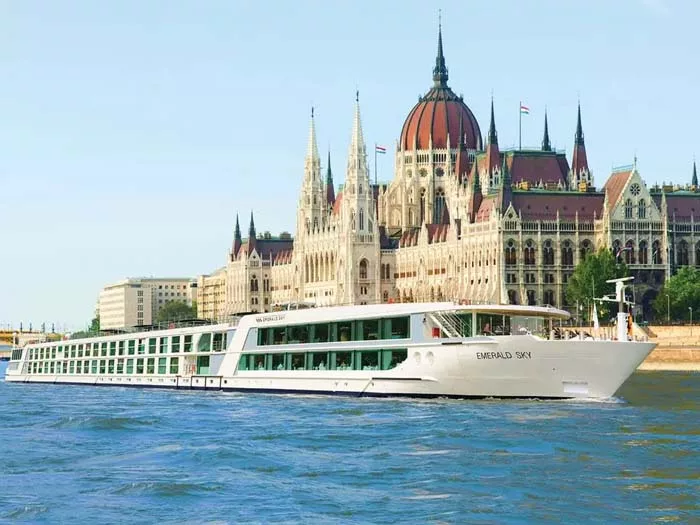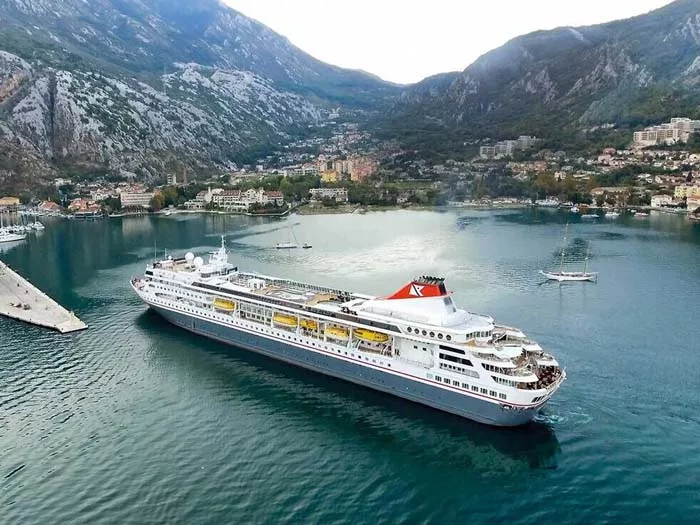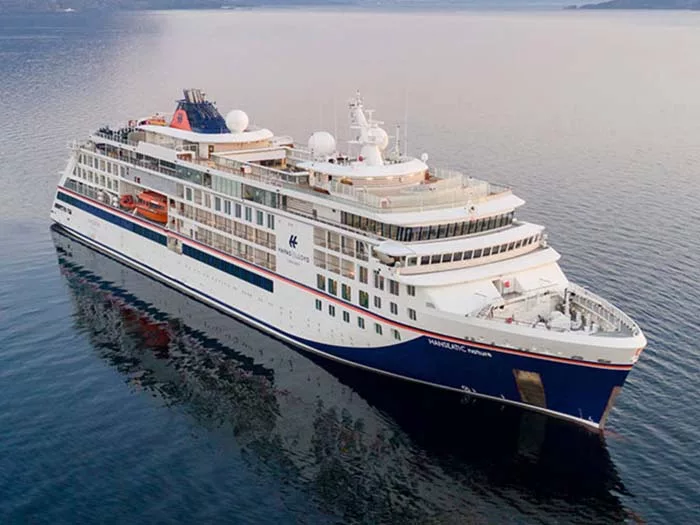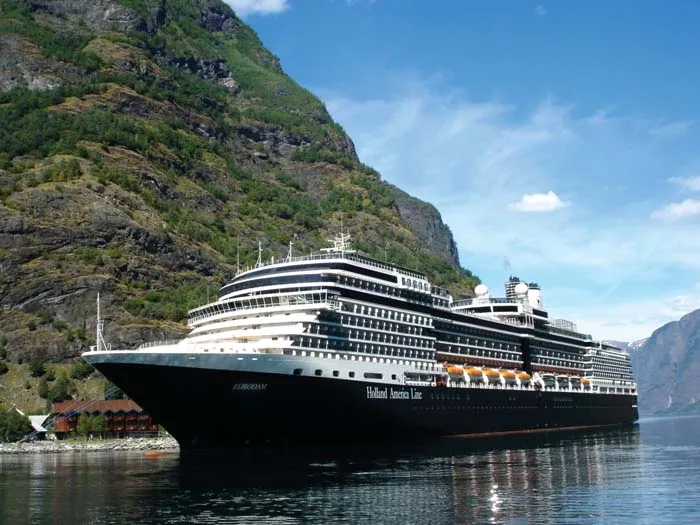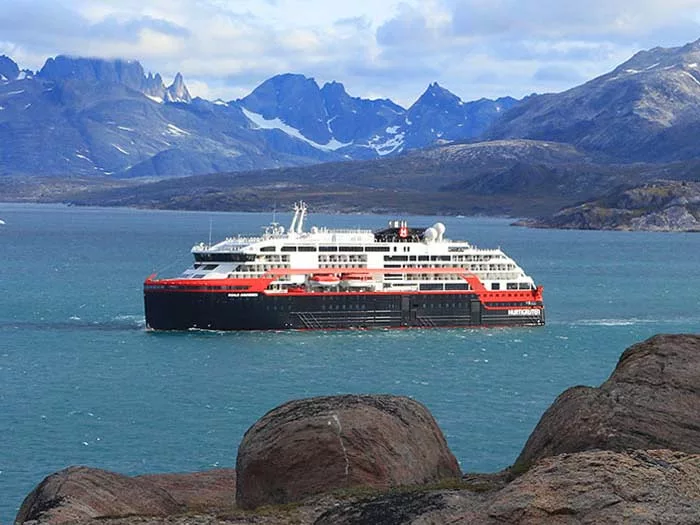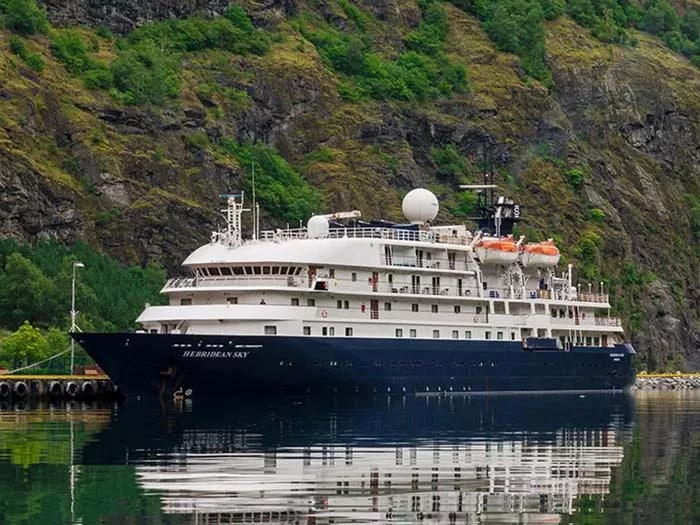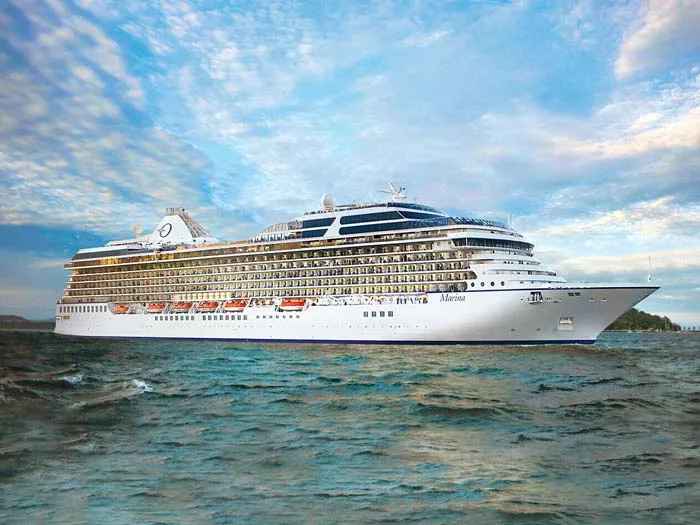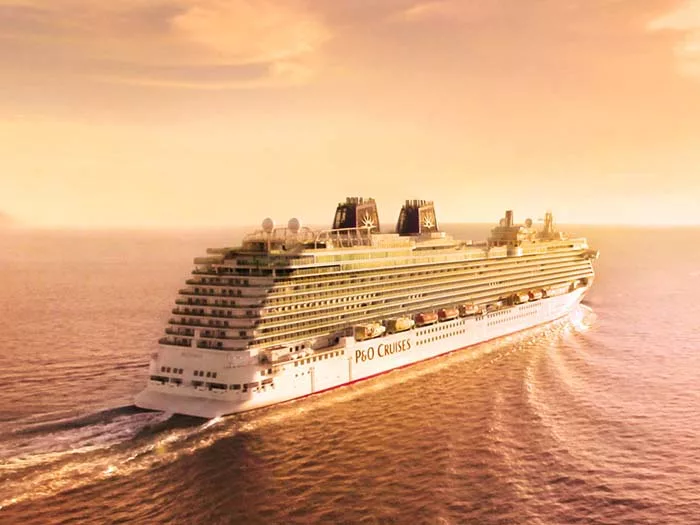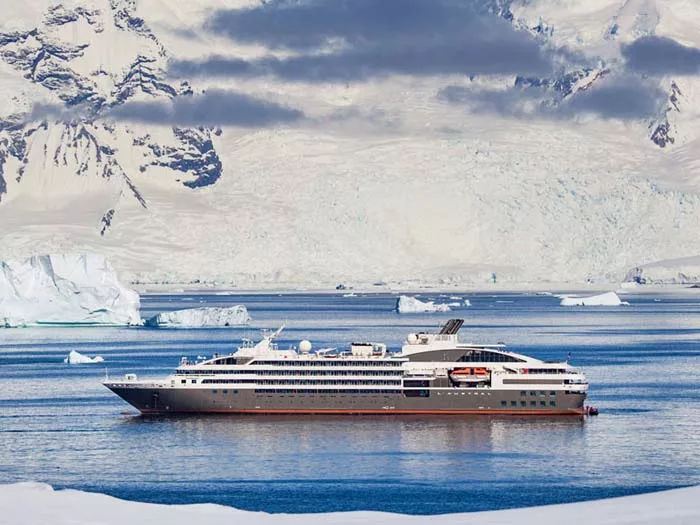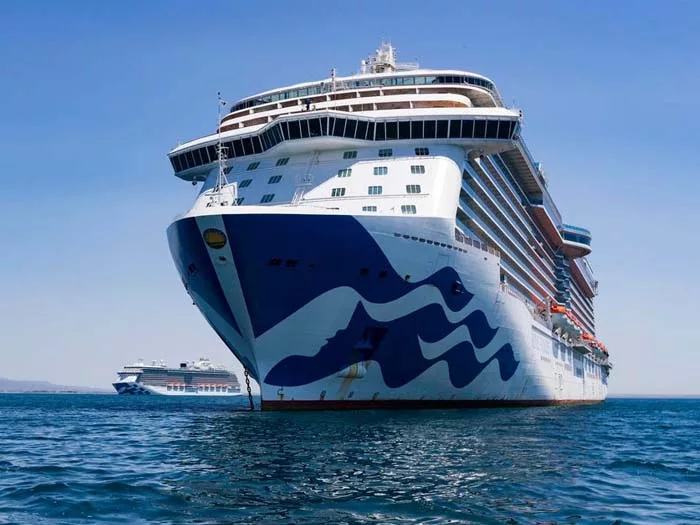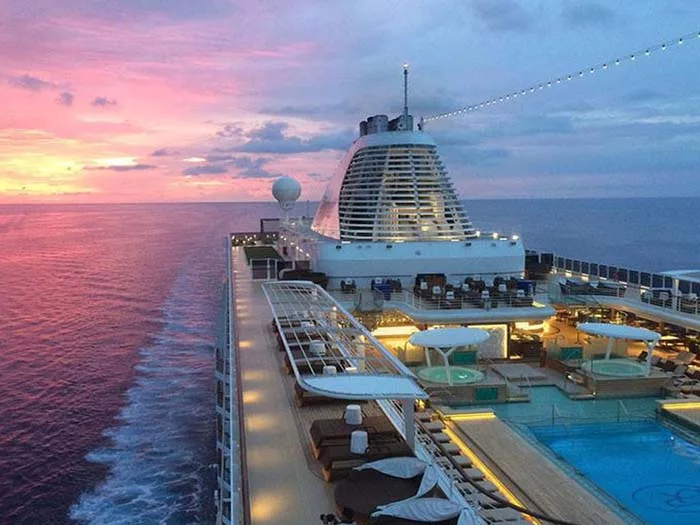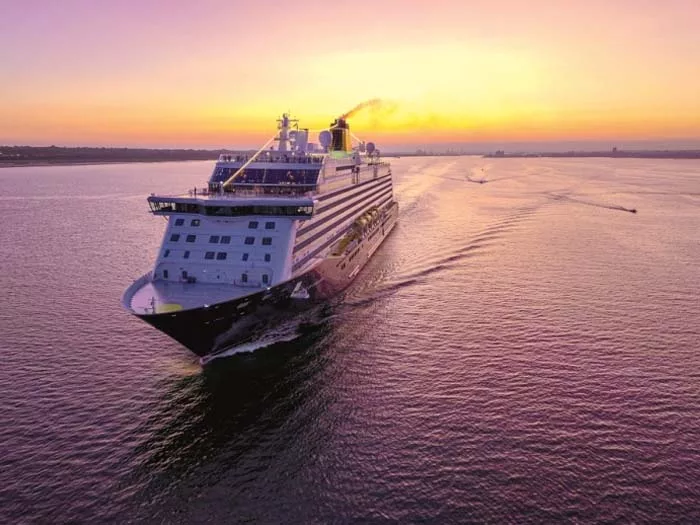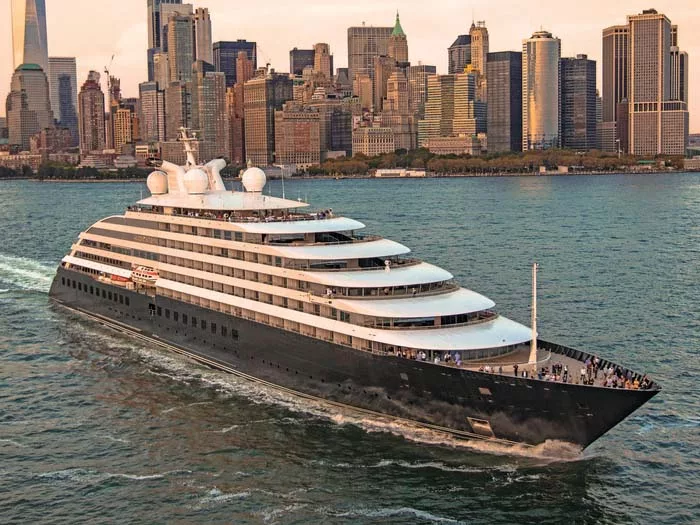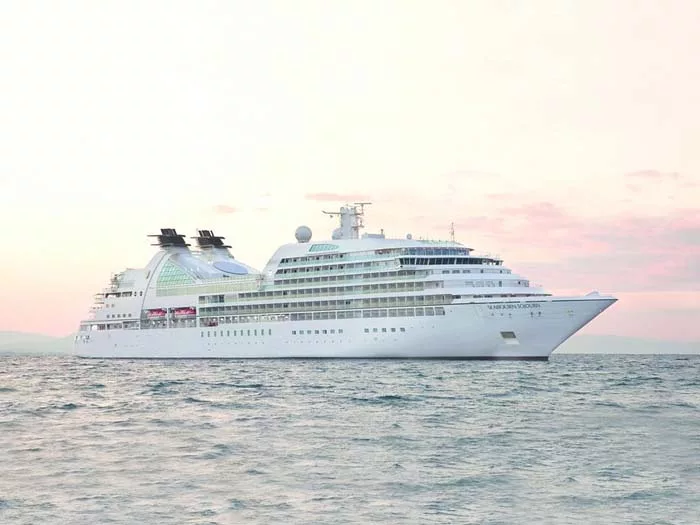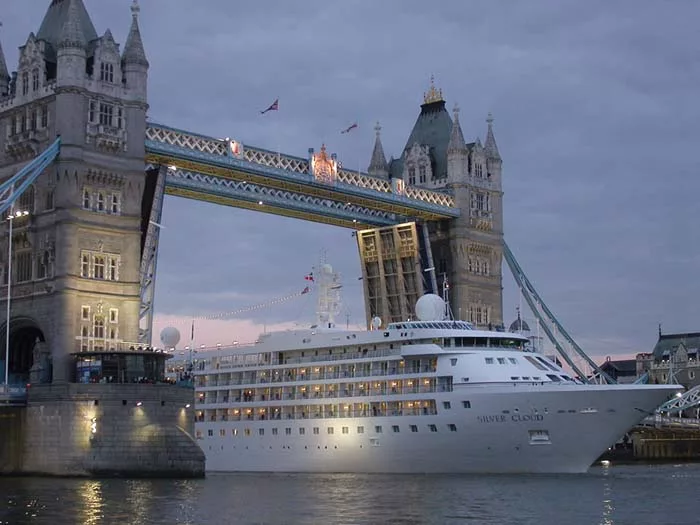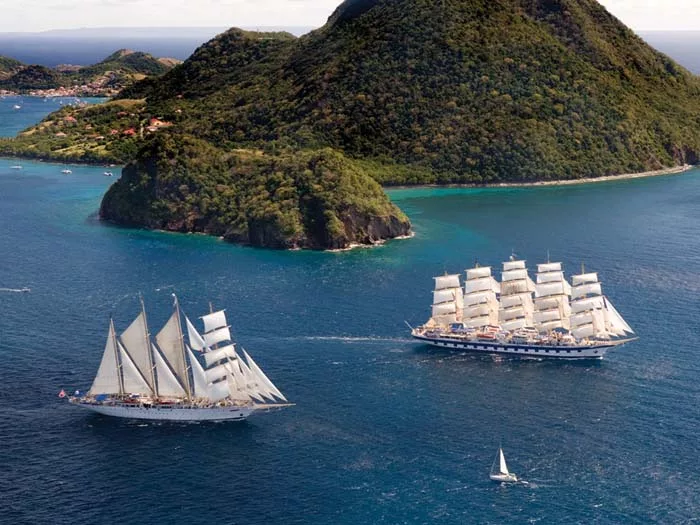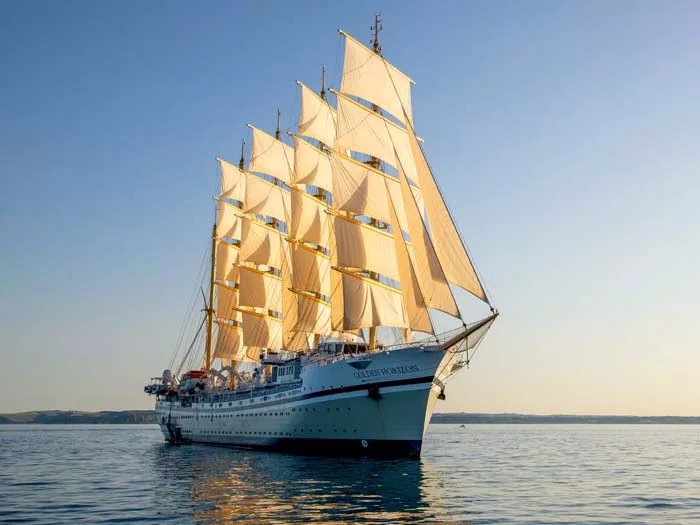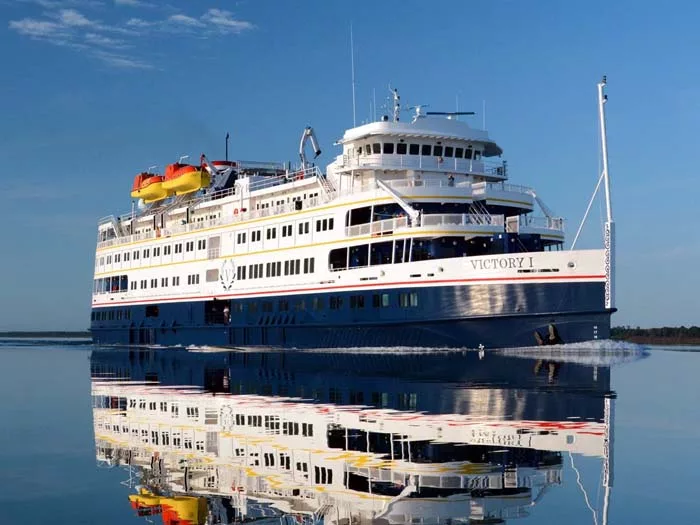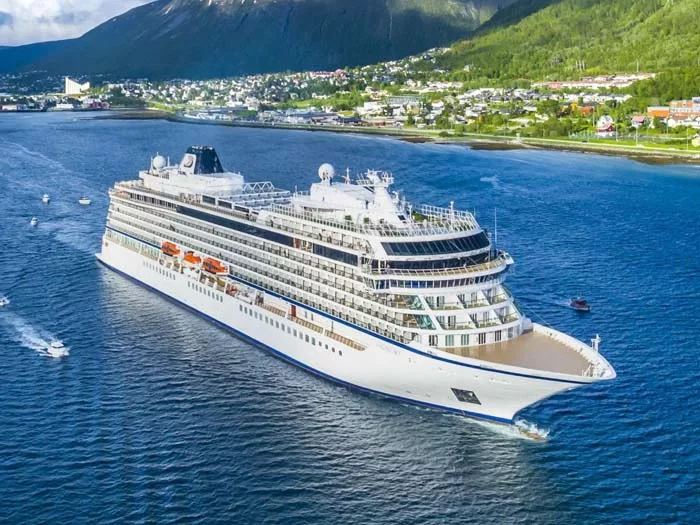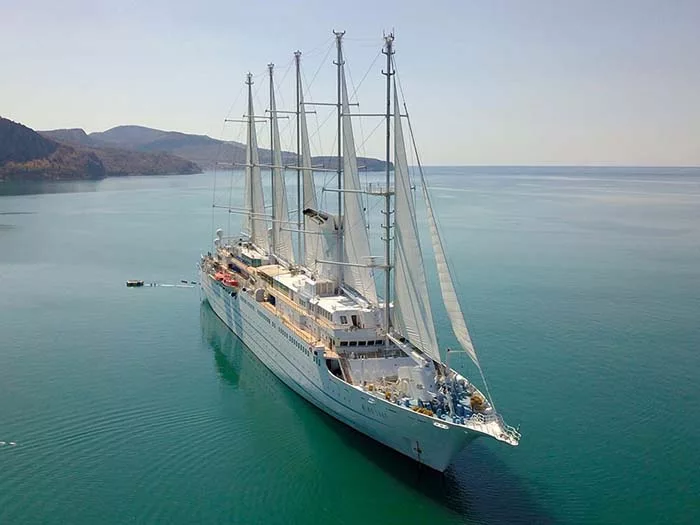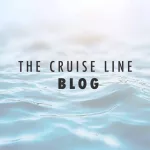Today is Earth Day, a day dedicated to raising awareness and bringing people together to take action in the fight against climate change. For over 50 years, citizens, businesses and governments have come together with a shared passion for sustainability. From The Great Global Cleanup to The Canopy Project, millions of us have volunteered and donated, and in doing so, we have contributed to a greener future.
The theme for 2022 is ‘Invest In Our Planet. What will you do?’ At The Cruise Line, we understand that we all have a part to play. That’s why we’ve decided to plant a tree in Malawi for every cruise that gets booked with us. In doing so, we help the nation achieve its goal of restoring 4.5 million hectares of degraded land by 2030. But what are our partners doing to make a change?
It’s somewhat stating the obvious, but cruising has never had the best reputation for sustainability and environmental protection. Over the years, the criticisms have come thick and fast, promoting the idea that if you want to travel responsibly, doing so by cruise ship is not the answer.
A simple online search will reinforce this perspective, with data available on everything regarding passenger footprints tripling in size while cruising on a ‘large’ ship to the amount of waste and greywater generated during a one week voyage.
Despite its notoriety, it’s impossible to deny that the industry is making great strides to not only improve its image but, more importantly, to implement real tangible change. Most cruise operators have spent the past decade implementing vital strategies for enhanced sustainability, allied with a keen focus on reducing their fleets’ carbon footprint.
The Cruise Lines International Association is a critical player in this drive for change. As the world’s most prominent cruise industry trade organisation, CLIA has continued to advocate for sustainable cruising. CLIA’s message is clear: reduce carbon emissions by 40% by 2030. In addition, the association is also pursuing carbon-neutral cruising by 2050 across fleets of ocean cruise lines worldwide.
During 2018’s Seatrade Global Conference, CLIA’s president and CEO Cindy D’Aoust made an impassioned plea to those attending, requesting unity and innovation to improve sustainability.
“Because we are at sea, we must do better. We must be more efficient, we must be more effective, and we must be more mindful than the land-based resorts. No single community has a great imperative to protect the environment and ensure that the ports and destinations cruise ships visit thrive sustainably.”
As with any industry, some cruise lines have responded to the need for more earth-friendly cruising than others. However, early adopters are already on their way to becoming carbon neutral. At the same time, even those operators seen to be in the infancy of change have at least made small steps towards a more sustainable future.
What are the cruise lines doing to improve the environmental impact of cruising?
Here is a look at some of the steps taken by cruise lines to improve the impact cruising has on the environment.
Green fuels
The use of liquified natural gas (LNG) helps to eliminate sulphur emissions and reduce nitrogen oxides by 85%. In addition, LNG is the way forward for many new-build ships, while several operators are retrofitting older vessels for greener performance. Hurtigruten has taken this approach one step further, with six vessels running on a combination of LNG and battery power.
Onboard recycling & the reduction of single-use plastics
Nearly every cruise line has significantly reduced the amount of single-use plastics aboard their ships. Estimates suggest that ships now recycle up to 60% more waste since introducing more efficient ways to reduce, reuse, and recycle.
Advance water waste treatment
Water waste treatments are being installed across more fleets to treat water before being released into the marine environment. According to CLIA, some vessels repurpose 100% of water waste, while on average, “cruise ship waste management professionals recycle 60% more waste per person than the average person recycles on shore each day”.
Energy efficiency
Many cruise lines have focused on improving the efficiency of their fleets, using energy alternatives where possible:
- Installation of LED lighting, using 80% less energy
- The ability to connect to shore power when in port, reducing unnecessary emissions
- Tinted windows to recycle heat onboard
- The incorporation of solar panels to provide renewable energy
Optimised ship design
Several new-built vessels have an optimised hull to reduce drag and improve fuel efficiency where possible. One of the leading examples of such a design is Aurora Expedition’s Greg Mortimer, which boasts an X-Bow to reduce fuel consumption.
Cleaner exhausts
Cruise lines including NCL and Carnival have installed Exhaust Gas Cleaning Systems (EGCS), which “scrub” exhausts from high-sulphur fuel and thus improve the quality of air emissions. The system removes sulphur oxide and particle matter before leaving the ship, resulting in clean white steam plumes.
Partnerships & projects
Many cruise lines partner with charities and organisations to better promote sustainability and environmentally-friendly practices. For example, the WWF works closely with a handful of operators – including Azamara Cruises – with proceeds from the sale of their products directly benefitting the charity. Furthermore, Celebrity Cruises and Oceanwide Expeditions include beach clean-ups as part of the overall cruise experience, allowing guests and crew to dedicate a few hours of each voyage to litter collection.
Cruise Sustainability Index
If you’re considering going on a cruise holiday and would like to know more about what your chosen line does to operate more sustainably, we’ve created an index that details their efforts below. Our team regularly updates this content for accuracy.
Please choose one of the following cruise lines:
- AmaWaterways
- American Queen Steamboat Company
- Aurora Expeditions
- Azamara Cruises
- Carnival
- Celebrity Cruises
- Celestyal Cruises
- Crystal Cruises
- Emerald Cruises
- Fred Olsen Cruise Lines
- Hapag-Lloyd Cruises
- Holland America Line
- Hurtigruten Cruises/Hurtigruten Expeditions
- Noble Caledonia
- Oceania Cruises
- P&O Cruises
- Ponant Cruises
- Princess Cruises
- Regent Seven Seas Cruises
- Saga Cruises
- Scenic River Cruises/Scenic Ocean Cruises
- Seabourn Cruises
- Silversea Cruises
- Star Clippers
- Tradewind Voyages
- Victory Cruise Lines
- Viking River Cruises/Viking River Cruises
- Windstar Cruises
AmaWaterways
AmaWaterways has evolved rapidly alongside the need for a more sustainable approach to cruising with their modern river fleet incorporating innovative fuel-efficient engines, microfiltration, and energy-saving LED lighting. In recent years, AmaWaterways have earned Green Award certification for the positive environmental impact of their ships, waste management and pollution prevention. AmaWaterways’ newest Europe-based river ship, AmaMagna, has a 10-engine configuration installed to help reduce fuel consumption by up to 20%.
Other eco-friendly practices include:
- The use of recyclable water containers made of renewable resources
- Reduction in single-use plastics
American Queen Steamboat Company
The American Queen Steamboat Company‘s commitment to environmental stewardship led the river cruise operator to become a member of the Passenger Vessel Association‘s Green WATERS programme in 2017. They have also worked in partnership with the United States Geological Survey and the Mississippi River Cities & Towns Initiative to monitor water temperature and pollution levels.
Other eco-friendly practices include:
- The installation of hydration stations to fill reusable drink-ware
- Recycling food and cooking oil wastage – as a company, American Queen recycled approximately 1,250 gallons of oil in 2019
Aurora Expeditions
Since the early 1990s, Aurora Expeditions have led the way in sustainable cruising. The introduction of Greg Mortimer in 2019 started a revolution regarding how the world’s cruise operators approach sustainability from a design perspective. Their innovative approach – purchasing carbon credits and reducing fuel consumption by up to 60% – has seen Aurora Expeditions classified as 100% carbon neutral. The next stage for Aurora is to achieve B CORP certification by 2023.
Other eco-friendly practices include:
- Reduction in single-use plastics
- The use of eco-friendly products and cleaning equipment
- Sustainable food programme scheduled for later in the year
Azamara Cruises
Azamara Cruises has improved its environmental footprint by teaming up with the World Wildlife Fund. As part of Azamara’s commitment to helping protect and conserve our oceans and marine life, the sale of WWF-related merchandise in the ship’s onboard boutiques is donated directly to the organisation to support its ongoing conservation work.
Other eco-friendly practices include:
- Azamara aims to reduce the environmental footprint by helping marine life and raising awareness with separate marketing campaigns
Carnival Cruises
Carnival Cruises has continuously improved its fleet’s carbon footprint by using greener fuel throughout its operations since Mardi Gras became the first LNG-Powered vessel in North America in 2020. Carnival has since reduced its carbon rate by 23.4% and has begun switching the fleet from marine diesel fuel to the more efficient alternative, reducing its carbon emissions by 20%.
Other eco-friendly practices include:
- The company aims to reduce their CO2e emissions by 40% by 2030
- Carnival aims to achieve net carbon-neutral ship operations exceeding IMO’s goal of 50% absolute emissions reduction by 2050
- They are retiring less efficient ships throughout the fleet
Celebrity Cruises
Celebrity Cruises have installed LED lighting throughout their fleet, which requires 80% less energy, generates 50% less heat and reduces energy consumption. Additionally, all Celebrity vessels are equipped with Common Rail Diesel Engines, reducing NOX emissions at all engine loads. The Solstice-series ships are equipped with solar power technology to help reduce the consumption of energy derived from fossil fuels.
Other eco-friendly practices include:
- Celebrity Cruises have installed high-efficiency appliances throughout the ship to minimise climate change and reduce their energy load
- Window films that are specially glazed prevent solar heat from penetrating, reducing the amount of air conditioning needed to cool the ship and saving energy
- They installed water-reduction technology throughout their fleet to reduce the use of water-producing equipment that consumes fuel or electricity
- New silicone paints are on the hull, reducing the energy needed to travel through water
Celestyal Cruises
Celestyal Cruises has reduced its CO2 emissions by 4,500 tonnes and has cut its fuel consumption by 5% to contribute towards improving its carbon footprint. In addition, Celestyal has reduced onboard waste by 15% and continues to monitor what they can do in the future to increase sustainability.
Other eco-friendly practices include:
- Desalinating seawater to cover 50% of onboard needs
Crystal Cruises
Crystal Cruises is another cruise line to hold the Green Award certification for their river ships. They have recently installed LED lighting across the fleet to improve their environmental footprint. Furthermore, each vessel features a diesel-electric power plant that helps reduce fuel consumption and connects to shore power. Going forward, they aim to minimise waste and reduce the consumption of water and natural resources.
Crystal Cruises’ new purpose-built expedition ship, Crystal Endeavor, is equipped with advanced positioning technology to ensure underwater ecosystems and reefs are not damaged. Furthermore, “biosecurity” screenings occur before and after every wilderness excursion to prevent pathogens from spreading from one site to another.
Other eco-friendly practices include:
- Increase sustainable sourcing throughout the entire fleet
- Advanced waste-water treatment systems
Emerald Cruises
Emerald Cruises use ship-to-shore technology to connect to land-based electricity providers while in port. In particular, one of their river ships, Emerald Harmony, has eliminated the use of all single-use plastic and replaced them with sustainable alternatives, from complimentary refillable bottles and filtered water stations to refillable toiletries in suites. Additionally, all their ocean & river vessels include state of the art sewage treatment plants with membrane filters.
Other eco-friendly practices include:
- All engines comply with the strictest EU rules for inland waterways ships
- Emerald no longer uses pre-packaged food, plastic bags or straws
Fred Olsen Cruise Lines
Fred Olsen strives to improve their carbon footprint by complying with all international policies and taking steps to exceed those policies whenever possible. Their ocean vessels use a mix of low sulphur fuel oil and marine gas oil, reducing overall fuel consumption throughout. In addition, Fred Olsen has removed all single-use plastic as a company, replacing it with more sustainable alternatives.
Other eco-friendly practices include:
- All onboard waste is sent to an onboard centre dedicated to safe waste disposal and recycling
- All printed marketing communication is on responsibly sourced FSC approved paper
- New linen bags have replaced plastic laundry bags
Hapag-Lloyd Cruises
Hapag-Lloyd Cruises have installed SCR catalysts on their latest expedition ships (Hanseatic Inspiration and Hanseatic Nature), which have helped reduce nitrogen oxide emissions by almost 95%. The esteemed German operator has also equipped vessels with a PROMAS rudder alongside low-pollutant marine gas oil. This unique propeller improves drive-in efficiency and consumes up to 18% less fuel.
Other eco-friendly practices include:
- Optimising energy consumption beyond the ships’ engines through LED lighting
- Plastic waste is collected separately onboard the vessels and recycled on land
- Using sustainable alternatives to plastic – the kayaks onboard their new expedition ships are made from HTP
Holland America Line
Holland America is committed to reducing, reusing and recycling across the entire fleet. They are currently transitioning to alternative fuels, investing in new low-carbon or zero-carbon emission technologies, and developing and installing advanced air quality systems. As a company, they are committed to reducing food waste and are installing biodigesters on their ships to help reduce their environmental footprint.
Other eco-friendly practices include:
- Reduction in single-use plastics
- Holland America aspires to achieve 100% fleet-shore-power connection capability and expand alternative fuels strategy across LNG programme and battery, fuel cell and biofuel capabilities by 2030
Hurtigruten Cruises / Hurtigruten Expeditions
Hurtigruten built the world’s first hybrid-powered cruise ships in 2018 (Roald Amundsen) and 2020 (Fridtjof Nansen). The vessels used green technology such as battery packs, heat recovery systems and new hull designs to reduce more than 20% of carbon emissions. The ships also reuse heat from the engines to warm the onboard hot water tanks, saving the power equivalent of 6,700 households per year.
Other eco-friendly practices include:
- Hurtigruten stopped using heavy fuel oil over a decade ago
- Encourages guests not to have daily towel or bed sheet changes
- Microplastic-made fleeces are not for sale in the onboard gift shop, only natural wool clothing
- All guests are given high-quality reusable bottles, saving at least 1,000 bottles per day
Noble Caledonia
Noble Caledonia provides refillable water bottles on their ships to reduce plastic use. As an expedition cruise line, they are heavily involved in helping to clear the plastic pollution from Aldabra’s turtle nesting beaches and tortoise grazing areas, where at one point, 25,750 kilograms of marine debris were removed over five weeks by a team of 12 people.
Other eco-friendly practices include:
- Noble Caledonia operates beach clean-up days aboard their ships and conducts a beach clean-up of plastic and fishing gear. The waste is then returned to the vessel for disposal at the next port.
Oceania Cruises
Oceania Cruises have eliminated several million single-use plastic bottles per year from onboard use and instead provided guests with refillable keepsake bottles. In addition, over 80% of self-produced water is used onboard across the fleet. Oceania previously purchased 3-million tons of carbon offsets, which is a step closer to achieving their aim to become carbon neutral. They are currently working to reduce their CO2 emissions rate and increase sustainable sourcing.
Other eco-friendly practices include:
- Aiming for a 40% reduction in industry-wide carbon emissions rate by 2030
- All vessels on order will have cold-ironing capabilities
- Advanced Wastewater purification systems have been installed across the fleet
P&O Cruises
P&O Cruises has committed to a decarbonisation pathway involving significant carbon-efficient technologies and energy efficiency investment. As a result, P&O launched their first LNG powered ship for the British Market (Iona), significantly reducing carbon, sulfur dioxide and nitrogen oxides, alongside seeing an overall reduction in the company’s emissions by implementing the relevant technology on all vessels to connect to shore power when in port.
In addition, P&O have been improving their air emissions by installing AAQ Systems across the fleet, removing sulfur compounds and particulate matter from the ships’ engine exhausts.
Other eco-friendly practices include:
- P&O are committed to reducing waste and preserving the value of natural resources
- They have reduced and eliminated non-essential single-use plastics, switching to more sustainable alternatives wherever possible
- They are working with suppliers to increase the sustainability of seafood sourcing and have promised never to source seafood that is rated as high impact, threatened or endangered
Ponant Cruises
Ponant has offset 150% of its carbon emissions and is the first cruise line to achieve Green Marine certification. Additionally, Ponant recently acquired a 75% reduction in nitrogen oxide emissions by having the ship’s catalytic converters operate continuously. Ponant’s vessels are fitted with electric connections, using shore-to-ship power when docked at suitably equipped ports and are limited to an average speed of 10-knots whilst sailing, reducing fuel consumption by 30%.
In 2022, Ponant launched its first hybrid polar exploration ship powered by liquified natural gas and electric generators. Le Commandant Charcot also has an onboard scientific research team.
Other eco-friendly practices include:
- In 2019, the cruise line became the first to exclude fuel oil and switch to Low Sulfur Marine Gasoil, ten times lower than the maximum
- As of 2022, single-use plastics have been eliminated across the fleet
- 100% of waste is separated and sorted, with 60% being recycled – that compares to the global average of less than 20%
The line is also committed to:
- Ensuring the reuse and traceability of all waste by 2025
- Reducing carbon emissions by 30%, nitrogen oxide by 85% and sulfur emissions by 98% by 2030
- Building an entirely carbon-neutral sailing ship which will launch no later than 2025
Princess Cruises
Princess Cruises aims to incorporate environmental practices that set a high standard for excellence and responsibility and help preserve the marine environment. They have achieved and maintained certification to the ‘Environmental Management System’ standard alongside investing in advanced air quality systems technology and the necessary equipment to minimise pollution.
Other eco-friendly practices include:
- Committed to further-reducing fuel consumption
- Princess Cruises pioneered shore power in the cruise industry in 2001, allowing them to turn off their diesel engines and to a plug-in power supply in port
Regent Seven Seas Cruises
Regent Seven Seas has created a long-term climate action strategy to help achieve its goal of offsetting three million metric tons of carbon dioxide equivalent over three years. They have incorporated a voluntary carbon offset programme and explored more eco-friendly alternative fuels to use on their future voyages. Furthermore, they continue to self-produce approximately 83% of the water used on board to increase their environmental footprint.
Other eco-friendly practices include:
- Reducing single-use plastics
- Regent is part of the ‘Sail and Sustain’ Environmental Programme, focusing on reducing environmental impact
Saga Cruises
Saga purchases 96% of its electricity from a completely renewable power supply and has further reduced its environmental impact by installing advanced waste management treatment systems, increasing recycling and reducing onboard waste. Additionally, Saga is working with ‘Travelife Gold‘ certified hotels, which helps to promote sustainability within the tourism industry and to minimise their impact on the environment.
Other eco-friendly practices include:
- Saga’s ships have adopted the single-use plastic policy
- They have set a 30% reduction target for emissions by 2030, aiming to hit below their 2°c temperature rise global target by 2050
Scenic River Cruises / Scenic Ocean Cruises
Both Scenic Ocean and Scenic River fleets recently joined ‘Climate Friendly™’ and have committed to reducing greenhouse gas emissions by funding renewable energy projects and offsetting any emissions created, effectively becoming a climate-friendly business.
Other eco-friendly practices include:
- Scenic purchases carbon credits from Climate Friendly™ to fund renewable energy projects such as wind and solar energy plants
Seabourn Cruises
Seabourn has maintained their excellent routine for continuous improvements in critical sectors such as fuel efficiency, greenhouse gas emissions and recycling. As a company, Seabourn continues to improve the quality of its emissions into the air by developing and operating advanced air quality systems across the fleet, capable of reducing sulfur compounds from the ship’s engine exhaust. Additionally, each ship has a full-time Environmental Officer who oversees environmental compliance.
Other eco-friendly practices include:
- Reduced single-use plastic, swapping for reusable alternatives such as wood and bamboo
- Guests and crew are provided with reusable water bottles
- Seabourn continues to reduce waste generated by ship operations
Silversea Cruises
Silversea’s new Nova-class ships – starting with 2023’s Silver Nova – will use hydrogen fuel cell technology to provide 100% of the power while in port, which, if successful, would be a first in the cruise industry. Additionally, the new vessels will use dual-fuel engines with LNG as the primary fuel, batteries, and fuel cells.
Silversea’s purpose-built Galapagos ship, Silver Origin, incorporates environmentally low-impact features to comply with future rules and regulations, including Galapagos National Park Directorate regulations.
Other eco-friendly practices include:
- The team at Silversea are working towards making the process of shipbuilding carbon neutral
- They are reducing fuel consumption and exhaust emissions
Star Clippers Cruises
The ships at Star Clippers operate under wind power up to 70% of the time, minimising the use of their auxiliary engines and contributing towards a reduced carbon footprint. The fleet is equipped with smaller, energy-efficient engines designed to exceed new regulations on exhaust gas emissions. Furthermore, Star Flyer was the first ship to be awarded the ‘International Air Pollution Prevention certificate.’
Other eco-friendly practices include:
- Using a less polluting fuel grade and utilising high-quality, low-sulphur gas oil
- Only Eco-friendly products are used onboard their vessels
- Onboard recycling, reduced waste and proper disposal of remaining waste
Tradewind Voyages
Tradewind Voyages have been working hard towards reducing their CO2 emissions due to sailing without propulsion. Going forward, as a company, they are focused on using more efficient energy systems and eco-friendly fuels, reducing Nitrogen Oxide and Sulphur Oxide levels.
Other eco-friendly practices include:
- Tradewind Voyages are reducing single-use plastics
- The feathering mode of ships’ propellers reduces the drag resistance through the water, increasing wind optimisation
- The introduction of innovative water usage systems
- Reduction in food waste
Victory Cruise Lines
Victory Cruise Lines have recently installed the Ulstein X-BOW on one of their ships, Ocean Victory, allowing the vessel to quietly glide through the waves with minimal vibration, reducing fuel consumption by up to 60%. Furthermore, all vessels have four diesel and two electro engines, reducing fuel consumption and allowing them to maintain Zero Emission Day capabilities that keep Alaska’s air and water clean.
Other eco-friendly practices include:
- Stabilisers have been implemented throughout the fleet, minimising the necessity of dropping anchor and protecting seabeds
- Marine biologists, scientists and naturalists from the Department of Marine Biology at California Polytechnic State University are on board to lead excursions and host lectures to guests and fellow crew members
Viking Ocean Cruises / Viking River Cruises
Viking has focused on reducing its carbon footprint across its ocean and river fleets, reducing their fuel consumption and greenhouse gas emissions by 40%.
The ocean ships have an energy-efficient hull, propeller and rudder arrangements alongside efficient engines with heat recovery systems.
Viking’s river vessels, Viking Legend and Viking Prestige, are fitted with diesel-electric hybrid engines, which reduce fuel consumption by 20% compared to regular diesel vessels. Additionally, both ships boast solar panels to increase their energy efficiency.
Other eco-friendly practices include:
- Viking owns a higher energy efficiency design index that exceeds the International Maritime Organization requirements for 2025 by almost 20%
Windstar Cruises
As a company, Windstar has kept up with the formulation and maintenance of environmental management systems, therefore achieving an ISO 14001 certification. They have been busy reducing their ecological footprint and have recently installed eco-friendly LED lighting throughout, already using 90% less energy. In addition, all vessels have had stabilisers containing heavy metals removed to reduce CO2 emissions by 50%.
Whilst using the sails in tandem with the engines, fuel consumption is significantly reduced compared to when the engines are the sole operator.
Other eco-friendly practices include:
- Converted to 100% recyclable packaging
- Windstar uses environmentally friendly materials onboard and within the ship’s design

